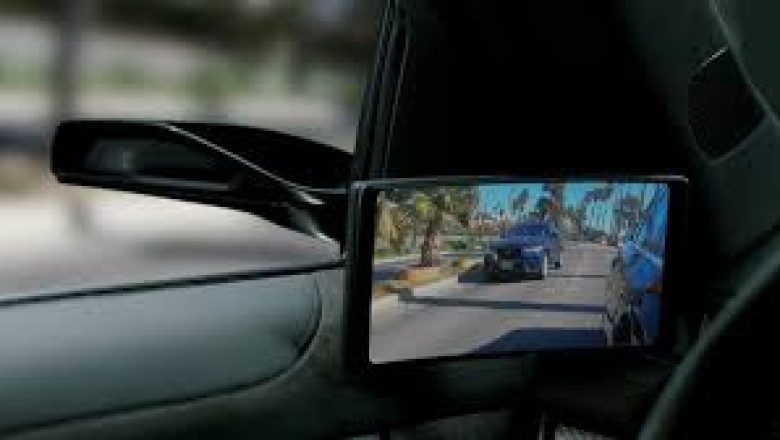views
The Automotive Display Cover Glass Market is witnessing increased global demand, yet manufacturers face several challenges related to durability, design complexity, and supply chain stability. As the automotive industry pivots toward smart, connected, and electric vehicles, cover glass producers must navigate technical and logistical hurdles to maintain competitive positioning. However, emerging technologies and process innovations are enabling manufacturers to address these challenges with precision and resilience.
Common Challenges in Manufacturing Automotive Display Cover Glass
1. High Performance Requirements
Unlike consumer electronics, automotive environments expose display glass to heat, UV radiation, vibrations, and humidity. This calls for glass that can endure extreme conditions without losing clarity, touch sensitivity, or structural integrity. Meeting these technical demands consistently across different vehicle models and markets remains a complex task for manufacturers.
In addition, high optical performance is crucial. Display readability under sunlight, night vision compatibility, and anti-glare properties are becoming standard requirements, pushing technical boundaries in material design.
2. Manufacturing Precision and Yield Loss
Automotive cover glass must often be curved, ultra-thin, or multi-functional, which complicates the production process. During forming, coating, and lamination, even small defects like air bubbles, micro-scratches, or uneven edges can result in costly rejections.
This high precision requirement increases the risk of yield loss during mass production. Manufacturers must invest in advanced inspection systems and tighter quality control to reduce waste and maintain profit margins.
3. Integration with Advanced Features
Touch, haptic feedback, and anti-smudge coatings must be integrated into the cover glass without affecting its durability or performance. These multilayer constructions require sophisticated manufacturing techniques and often lead to compatibility challenges with display modules.
Furthermore, seamless integration with heads-up displays (HUDs), augmented reality (AR), and curved designs adds another layer of complexity, demanding innovation in both design and production equipment.
Solutions and Innovations Tackling Industry Challenges
1. Advanced Material Development
Manufacturers are turning to next-generation materials like chemically strengthened aluminosilicate glass, laminated composites, and flexible hybrid substrates to meet durability and performance requirements. These materials offer superior thermal and mechanical resistance while allowing for thin, lightweight constructions.
Coating innovations also address consumer pain points. Oleophobic coatings resist fingerprints, while anti-reflective films improve visibility under all lighting conditions. Manufacturers are also exploring nanotechnology for self-healing surfaces and scratch resistance.
2. Automation and Precision Engineering
To reduce human error and improve production consistency, companies are integrating AI-driven automation in the production line. Automated inspection tools can detect microscopic flaws in glass surfaces and alignments, ensuring higher yields and minimizing rework.
Precision forming technologies—such as laser cutting, CNC shaping, and vacuum lamination—are increasingly used to craft custom shapes and curves while maintaining structural reliability. These tools allow glass to fit seamlessly into futuristic dashboard designs.
3. Modular Design and Pre-integration
One approach to reduce integration issues is to supply display cover glass as pre-assembled modules. These units combine touch sensors, coatings, and laminated layers into a ready-to-install component for automotive OEMs.
Modular production not only saves time during assembly but also ensures tighter compatibility between components, reducing the risk of installation defects or sensor misalignment. It simplifies logistics for vehicle manufacturers managing complex production schedules.
Supply Chain Challenges and Resilience Strategies
1. Material Sourcing and Global Shortages
Key raw materials like specialized silica, coating chemicals, and bonding agents are subject to global fluctuations in availability and cost. Disruptions due to geopolitical tensions or pandemics, such as COVID-19, have revealed the vulnerability of globalized supply chains.
To combat this, manufacturers are diversifying suppliers across regions and entering into long-term agreements to ensure consistent material availability. Some are investing in localized production hubs closer to automakers, which reduces dependency on transcontinental shipping.
2. Logistics and Lead Times
Due to the high precision of cover glass, even minor shipping damage can render a batch unusable. This places pressure on packaging design, transport conditions, and logistics partnerships.
Manufacturers now use advanced protective packaging, real-time shipment tracking, and predictive delivery models to reduce transit risks and meet tight OEM timelines. Digital supply chain tools also help forecast demand more accurately and optimize inventory management.
Regulatory Compliance and Testing
Automotive components must meet strict safety and performance regulations. Cover glass used in interior displays is often subject to standards related to shatter resistance, chemical stability, and light transmission.
To stay compliant across regions, manufacturers invest in third-party certifications, climate chamber testing, and accelerated life-cycle simulations. Early-stage testing and rapid prototyping help ensure regulatory requirements are met before mass production, reducing post-launch recalls and liabilities.
Collaboration with OEMs and Display Providers
Long-term partnerships with automotive OEMs and display panel manufacturers are proving vital in overcoming manufacturing challenges. Early-stage design collaboration allows for joint development of optimized cover glass solutions tailored to a vehicle’s interior and functional needs.
By involving glass producers during the conceptual phase of vehicle design, automakers can ensure that the final product balances aesthetics, functionality, and manufacturability—resulting in a smoother launch process and fewer revisions during production.
Conclusion
The Automotive Display Cover Glass Market presents a dynamic landscape filled with both technical challenges and innovative solutions. From harsh automotive conditions to the rising demand for advanced digital features, manufacturers must adopt agile and technologically robust strategies. By investing in material innovation, precision manufacturing, and global supply chain resilience, manufacturers worldwide are positioning themselves to meet future demands while staying competitive in a rapidly evolving industry.






















Comments
0 comment